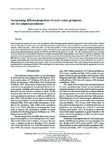Por favor, use este identificador para citar o enlazar este ítem:
http://www.alice.cnptia.embrapa.br/alice/handle/doc/484395Registro completo de metadatos
| Campo DC | Valor | Lengua/Idioma |
|---|---|---|
| dc.contributor.author | SANTOS, M. X. dos | pt_BR |
| dc.contributor.author | POLLAK, L. M. | pt_BR |
| dc.contributor.author | PACHECO, C. A. P. | pt_BR |
| dc.contributor.author | GUIMARAES, P. E. O. | pt_BR |
| dc.contributor.author | PETERNELLI, L. A. | pt_BR |
| dc.contributor.author | PARENTONI, S. N. | pt_BR |
| dc.contributor.author | NASS, L. L. | pt_BR |
| dc.date.accessioned | 2011-04-10T11:11:11Z | pt_BR |
| dc.date.available | 2011-04-10T11:11:11Z | pt_BR |
| dc.date.created | 2000-11-07 | pt_BR |
| dc.date.issued | 2000 | pt_BR |
| dc.identifier.citation | Genetics and Molecular Biology, Ribeirão Preto, v. 23, n. 2, p. 445-451, 2000. | pt_BR |
| dc.identifier.uri | http://www.alice.cnptia.embrapa.br/alice/handle/doc/484395 | pt_BR |
| dc.description | Maize breeders frequently wish to use exotic germplasm in their breeding programs without losing specific characteristics of their adapted material. The objective of this study was to determine the optimal proportions of exotic germplasm to incorporate into adapted populations (F2 = 50% exotic, BC1 = 25% exotic, BC2 = 12.5% exotic and BC3 = 6.25% exotic) to form the initial foundation population and to determine the heterosis between adapted x exotics. We used six exotic populations of different origins and two adapted populations representing a Brazilian heterotic pattern. In 1993-94 and 1994-95, the parents, F1, F2, BC1, BC2, BC3 and four checks were evaluated in six environments in central Brazil using an 8 x 9 simple rectangular lattice design. Higher mean values for yield were obtained as the proportions of exotic germplasm decreased. Some backcrosses produced more than the adapted populations BR 105 (7.59 ton/ha) and BR 106 (8.43 ton/ha). The best results were obtained when incorporating 6.25 or 12.5% of exotic genes. This trend was true for root lodging, stalk lodging and ear diseases but not for plant and ear height. The midparent heterosis for yield varied from - 16.1 to 40.3%. Midparent heterosis with positive and negative values were also found for the other traits. The results indicate the potential of exotic germplasm for developing good hybrids. After choosing the best exotic source, some recurrent selection might be appropriate in order to adapt and improve the exotic populations. | pt_BR |
| dc.language.iso | eng | eng |
| dc.rights | openAccess | eng |
| dc.subject | Exotico | pt_BR |
| dc.subject | Maize | pt_BR |
| dc.subject | Exotic | pt_BR |
| dc.title | Incorporating different proportions of exotic maize germplasm into two adapted populations. | pt_BR |
| dc.type | Artigo de periódico | pt_BR |
| dc.date.updated | 2018-06-08T11:11:11Z | pt_BR |
| dc.subject.thesagro | Germoplasma | pt_BR |
| dc.subject.thesagro | Melhoramento | pt_BR |
| dc.subject.thesagro | Milho | pt_BR |
| dc.subject.thesagro | Zea Mays | pt_BR |
| dc.subject.nalthesaurus | breeding | pt_BR |
| dc.subject.nalthesaurus | germplasm | pt_BR |
| riaa.ainfo.id | 484395 | pt_BR |
| riaa.ainfo.lastupdate | 2018-06-08 -03:00:00 | pt_BR |
| dc.contributor.institution | CLESO ANTONIO PATTO PACHECO, CNPMS; PAULO EVARISTO DE O GUIMARAES, CNPMS; SIDNEY NETTO PARENTONI, CNPMS. | pt_BR |
| Aparece en las colecciones: | Artigo em periódico indexado (CNPMS)  | |
Ficheros en este ítem:
| Fichero | Descripción | Tamaño | Formato | |
|---|---|---|---|---|
| Incorporatingdifferent.pdf | 80.8 kB | Adobe PDF |  Visualizar/Abrir |









